Project Type: Communication, Entertainment
Category: Event, Exhibition
Year: 2022
Location: 高雄駁二藝術特區 Kaohsiung Pier-2 Art Center
Category: Event, Exhibition
Year: 2022
Location: 高雄駁二藝術特區 Kaohsiung Pier-2 Art Center
2021 DigiWave
︎︎︎︎︎︎︎︎︎︎︎︎︎︎︎︎︎︎︎︎︎︎︎︎ⒷⒶ
Digi is the means, while Wave is the trend of thought, flow, and also communication. We hope to raise a big question on a major issue in life each year at DigiWave. Using technology to communicate, and presenting in the forms of exhibitions and events, will bring about the next wave that will push our lives forward.
Those Virtual Worlds We Can’t Wait to Enter
In 1986, it is uncertain whether during the process of porting the game “Gradius,” Kazuhisa Hashimoto, a program engineer of the video game company KONAMI, felt the game was too difficult or he had rather weak skills, he added a secret command "↑↑↓↓←→←→ⒷⒶ" in the game, and then further enhanced in another game "Contra," thus becoming the Konami Command that many people are familiar with.We once used only six buttons, "↑," "↓," "←," "→," "Ⓑ," and "Ⓐ," to let our consciousness roam and wander through various electronic worlds in a rectangular frame. This rectangular frame is everywhere, in the living room, on the desktop, on the side of the streets, or even in your pocket. In the past few decades, it has evolved from entertainment for a minority of people to phenomenon-level culture, becoming the common language and memory of modern times.Sometimes it’s one person, sometimes it’s a group of people, sometimes it’s with strangers.It's laughter, surprise, frustration, emotional, rage, achievement, reluctance, or enlightenment.Every time we enter and leave, what do we leave behind? What do we take away?
And why are we always so thrilled and unable to wait?—— Main Discourse
As a continuation from 2020 DigiWave, the team is honored to be invited again to curate the Exhibition in 2021. This is a technology-oriented celebration. We chose “video games” as the proposition this year, and to enter this from the perspectives of carriers, players, and game designers. We hope that under our guidance, visitors can see the relationship between video games and us.
Experiencing Video Games in Video Games
"Actual experience is the best way to understand something." Because our theme is video games, in addition to the usual exhibitions and activities, we attempted to create an exhibition experience that is very much like a video game. Therefore, we set out to design an experience system, where we scattered the mechanics of video games in the real and virtual spectrum, extending from the exhibition content to the exploration of urban areas, and expanding the scale from a warehouse to the entire Yancheng District. Visitors become players, and the exhibition area becomes scenes in the game. Through actually being inside and experiencing the game, we can reflect on the philosophy of video games, players, game designers, and even the philosophy between real and virtual, and transform the exhibition into a sympathetic scene where mutual relationships and behaviors are constantly flowing.
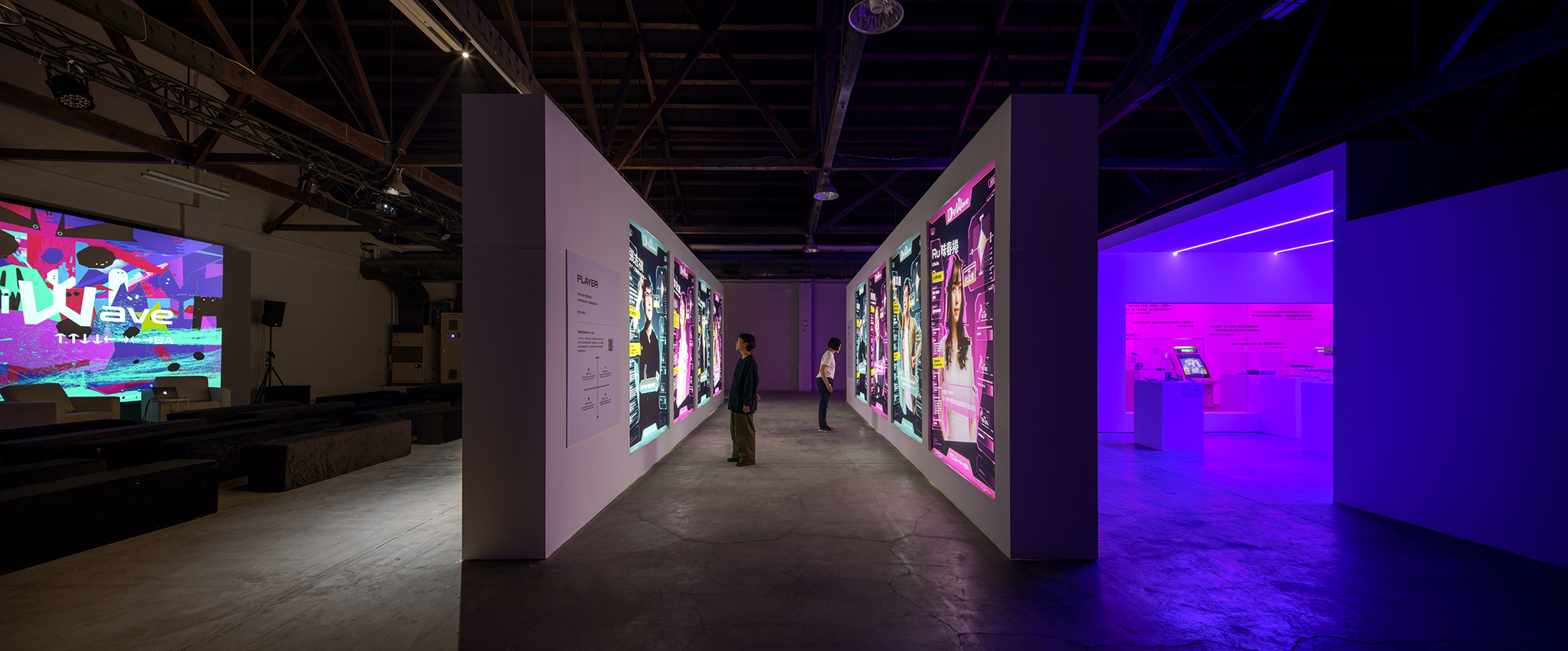
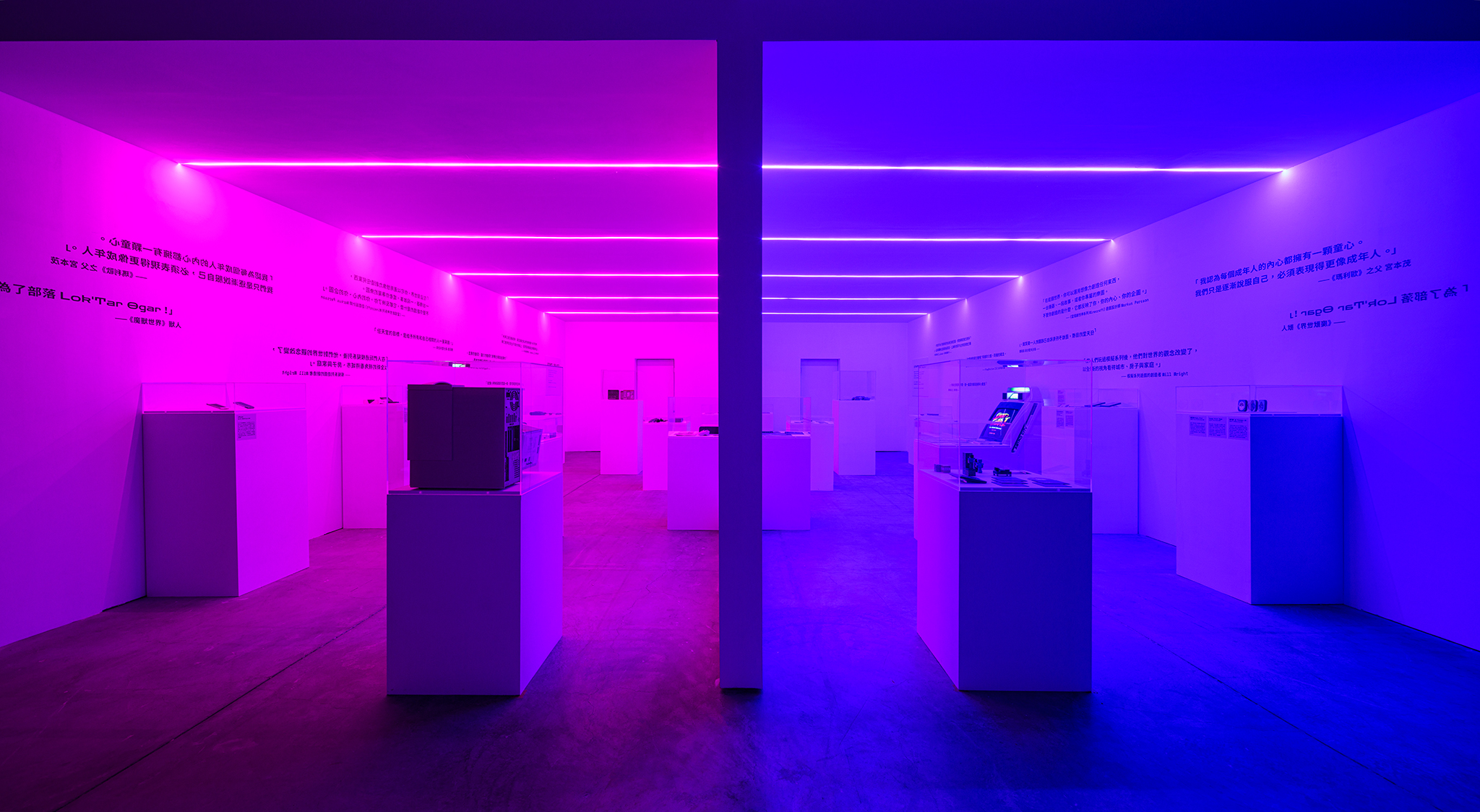
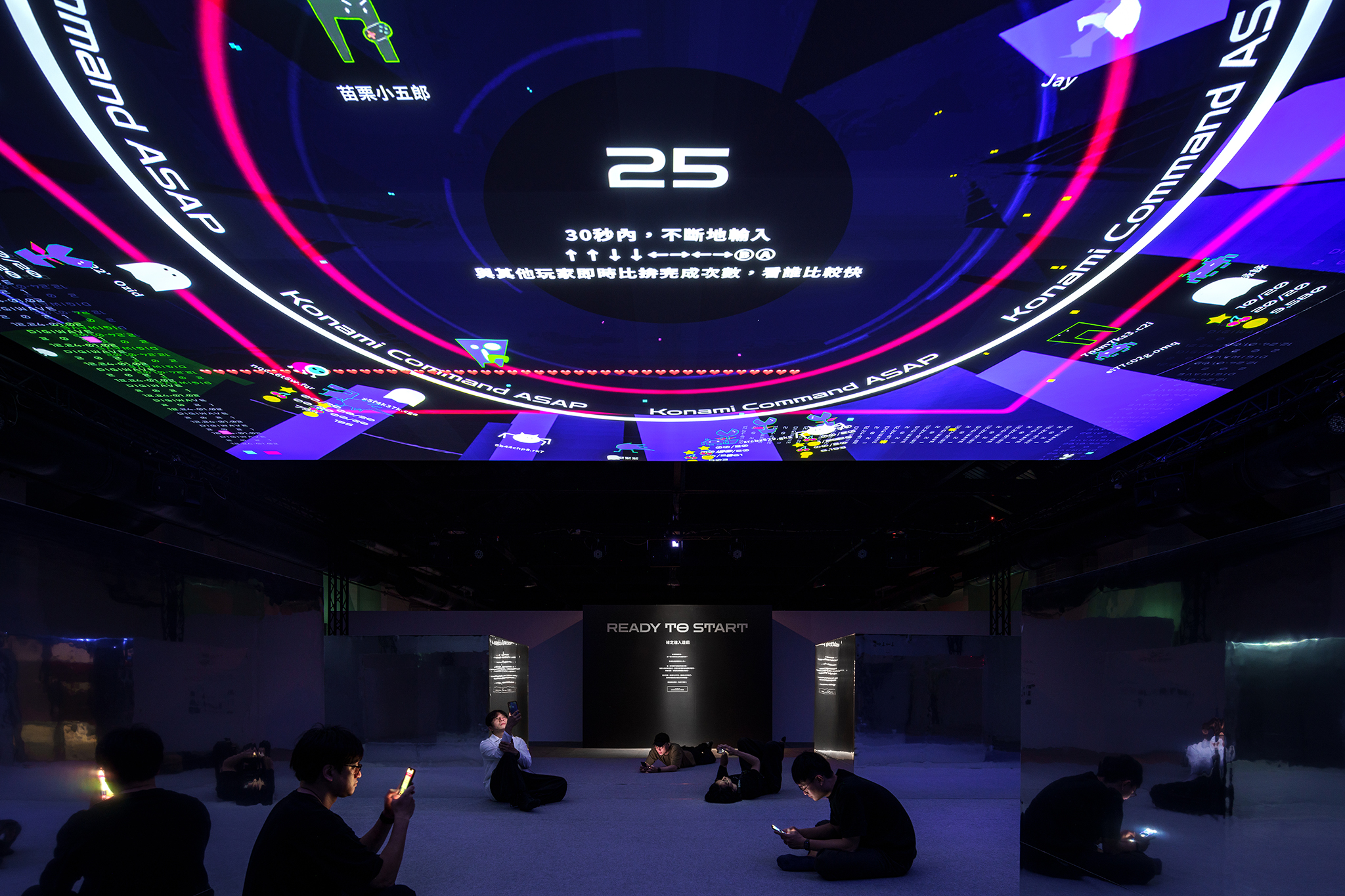


The concept of games has always existed in human civilization and is an activity that is entertainment by nature.
Digital technologies, such as transistors and electronic calculators, were produced as technological innovations after World War II,
which were then applied to games and gave birth to "video games."
This has caused a dramatic and far-reaching effect on today's culture.
Recall the memory of the first time we played video games,
which carrier did we use to “START” and which video game world did we “SELECT” to enter?
Why did we “START” the game? And why did we “SELECT” that game?
—— Area Discourse
Digital technologies, such as transistors and electronic calculators, were produced as technological innovations after World War II,
which were then applied to games and gave birth to "video games."
This has caused a dramatic and far-reaching effect on today's culture.
Recall the memory of the first time we played video games,
which carrier did we use to “START” and which video game world did we “SELECT” to enter?
Why did we “START” the game? And why did we “SELECT” that game?
—— Area Discourse
START / SELECT
Paying tribute to the two buttons in the center of the FAMICOM (Family Computer) controller, choosing “SELECT” as the "START,” and the two doors that first catch our eyes are the entrances, which immediately give the visitors the right to select. This is also an important and unique core in video games. Visitors are no longer watching passively, but are being actively involved.
Behind the doors, there are two spaces that simulate mirroring. On one end, ten classic game consoles in video game history are displayed, while on the other end of the mirroring, the ten most famous games corresponding to the game consoles are displayed. As a prelude, we cut to the chase with “Which game console did we "START" with, and which game did we "SELECT?" which will then trigger memories and discussions about video game experiences.
Echoing the key visual, we used "red and blue", which are often used in video games or when discussing virtual and real issues, as the main colors of the two spaces respectively. Objects are spread out along the time axis on the visitation traffic flow, supplemented by famous quotes and their mirror images scattered on the wall. We integrated video game-related memories, sense of the times, symbols, allusions, and anecdotes into a mirrored space filled with metaphors (red and blue pills in The Matrix and revolving door spaces in Tenet).


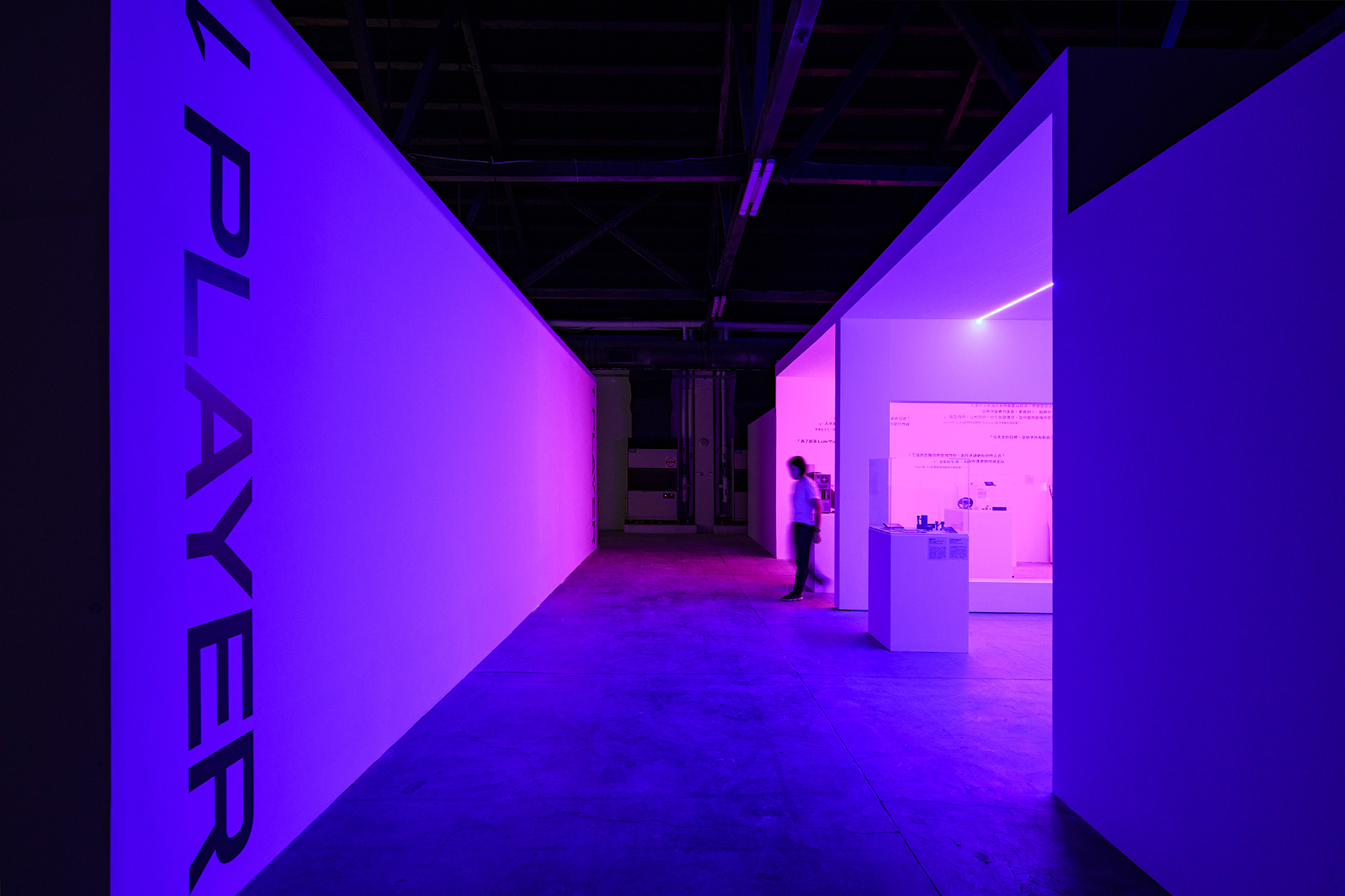

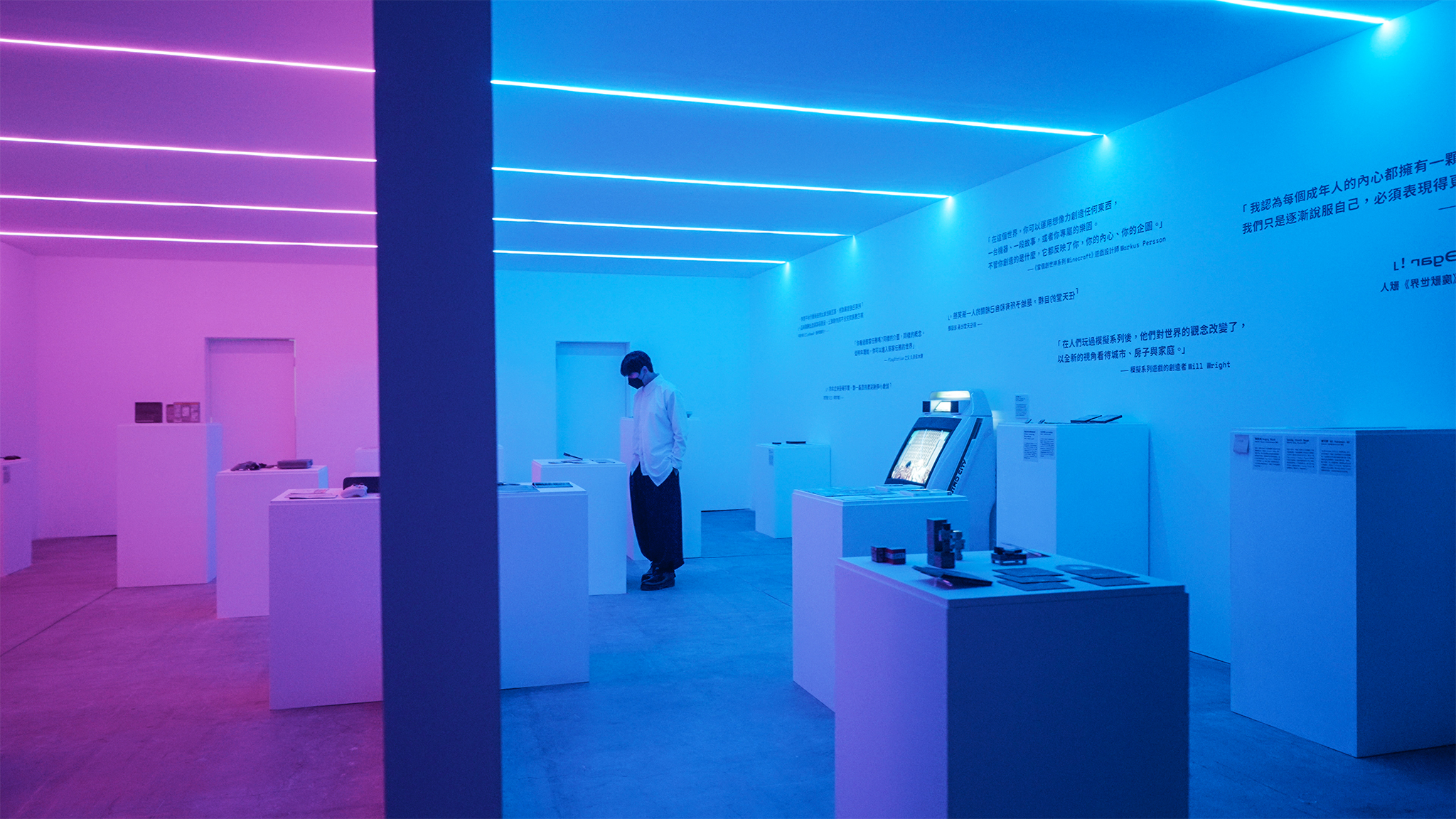
What type of game do we love to play?
In which games did we get some fun and deep memories?
What type of player are you?
—— Area Discourse
In which games did we get some fun and deep memories?
What type of player are you?
—— Area Discourse
PLAYER
Continuing the video game consoles and games from the previous area, the focus is shifted from the object to the actual player. Richard Bartle, also known as professor Richard, the co-creator of the world’s first MUD (Multi-User Dungeon), observed and studied player behaviors in the game, and divided the behaviors into four types:
Killers
Achievers
Socializers
Explorers
Eight celebrities from different occupations were invited. We first classified them and then carried out a series of interrogations. The relationships between these people and video games are presented in a large area of backlit films. They are lined up on both sides, forming a corridor. When walking by them, it also helps us to reflect on the relationship between ourselves and video games, as well as our other self after entering the virtual world.



The 1990s was the praised golden decade of domestic games. During that period, game companies, such as Softstar Entertainment, Soft-World International, etc, were established and launched many classic games, such as “The Legend of the Sword and Fairy,” “Richman,” and “Heroes of Jin Yong,” etc., and these games are still talked about today.
Due to the migration of the market and industry in the later years, Taiwan’s domestic games no longer had as much influence as they had in the past. In recent years, with the rise of mobile games and the Steam platform, in addition to game companies, more and more independent development teams have also delved into the development of games, and, hence, have successively launched excellent and diverse games, which have given the game industry a new outlook.
Actually purchasing and playing these excellent games is the most substantial support you can give to the game developers.
What is the next domestic game you plan to play?
—— Area Discourse
Due to the migration of the market and industry in the later years, Taiwan’s domestic games no longer had as much influence as they had in the past. In recent years, with the rise of mobile games and the Steam platform, in addition to game companies, more and more independent development teams have also delved into the development of games, and, hence, have successively launched excellent and diverse games, which have given the game industry a new outlook.
Actually purchasing and playing these excellent games is the most substantial support you can give to the game developers.
What is the next domestic game you plan to play?
—— Area Discourse
MADE IN TAIWAN
We selected eight recently released domestic games, ranging from student works, independent productions, to commercial masterpieces. These are all unique and extraordinary choices. Through the clips of game play, visitors can understand the uniqueness of these games and feel the abundant creative energy of the Taiwanese game developers.


CHATROOM
As its name suggests, this is an area to exchange ideas. We planned a series of film screenings, lectures, and talks, and invited esports players, game designers, YouTubers, and Podcasters to lead the visitors in delving into a more in-depth and speculative video game journey from different perspectives.
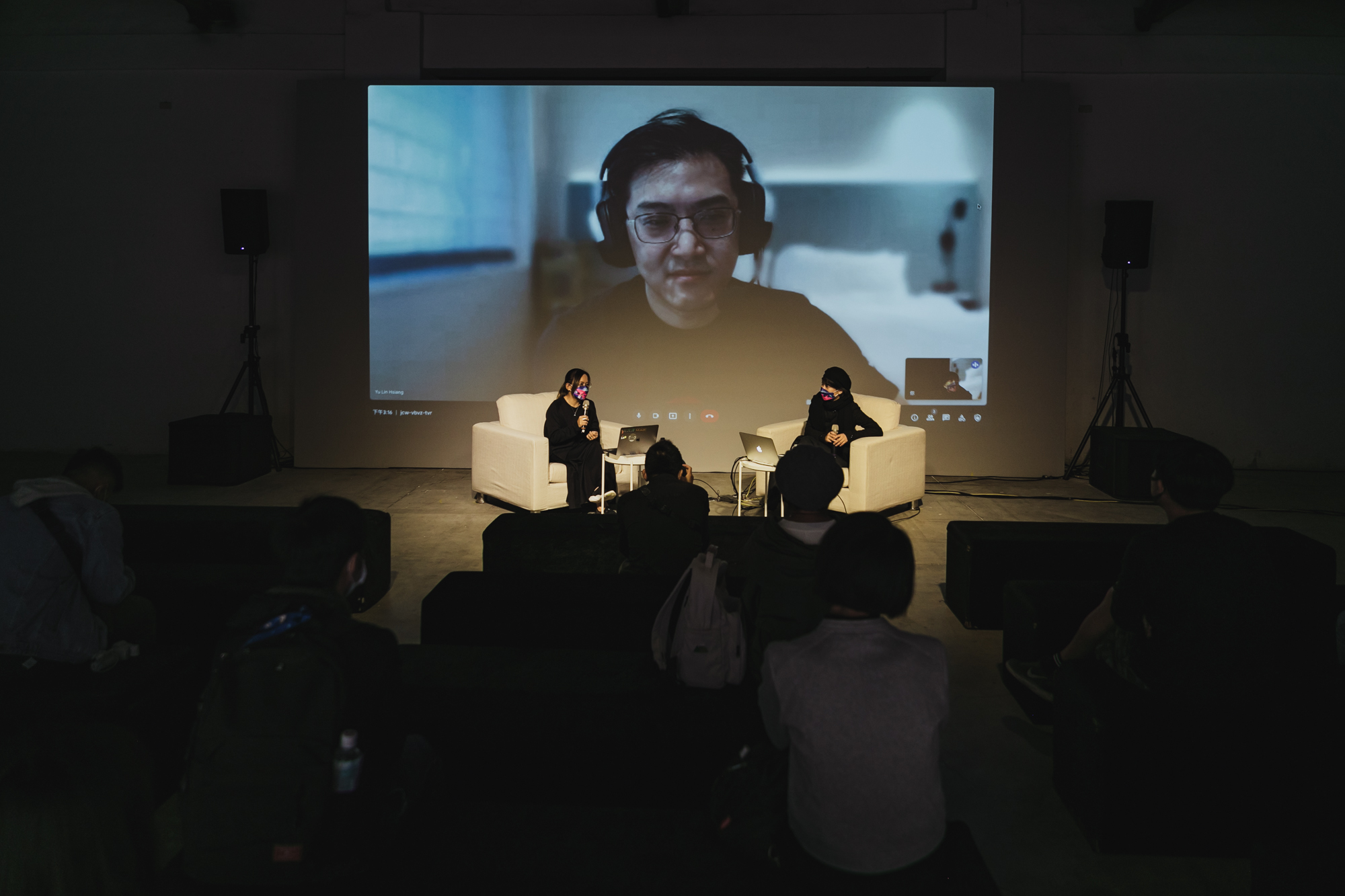
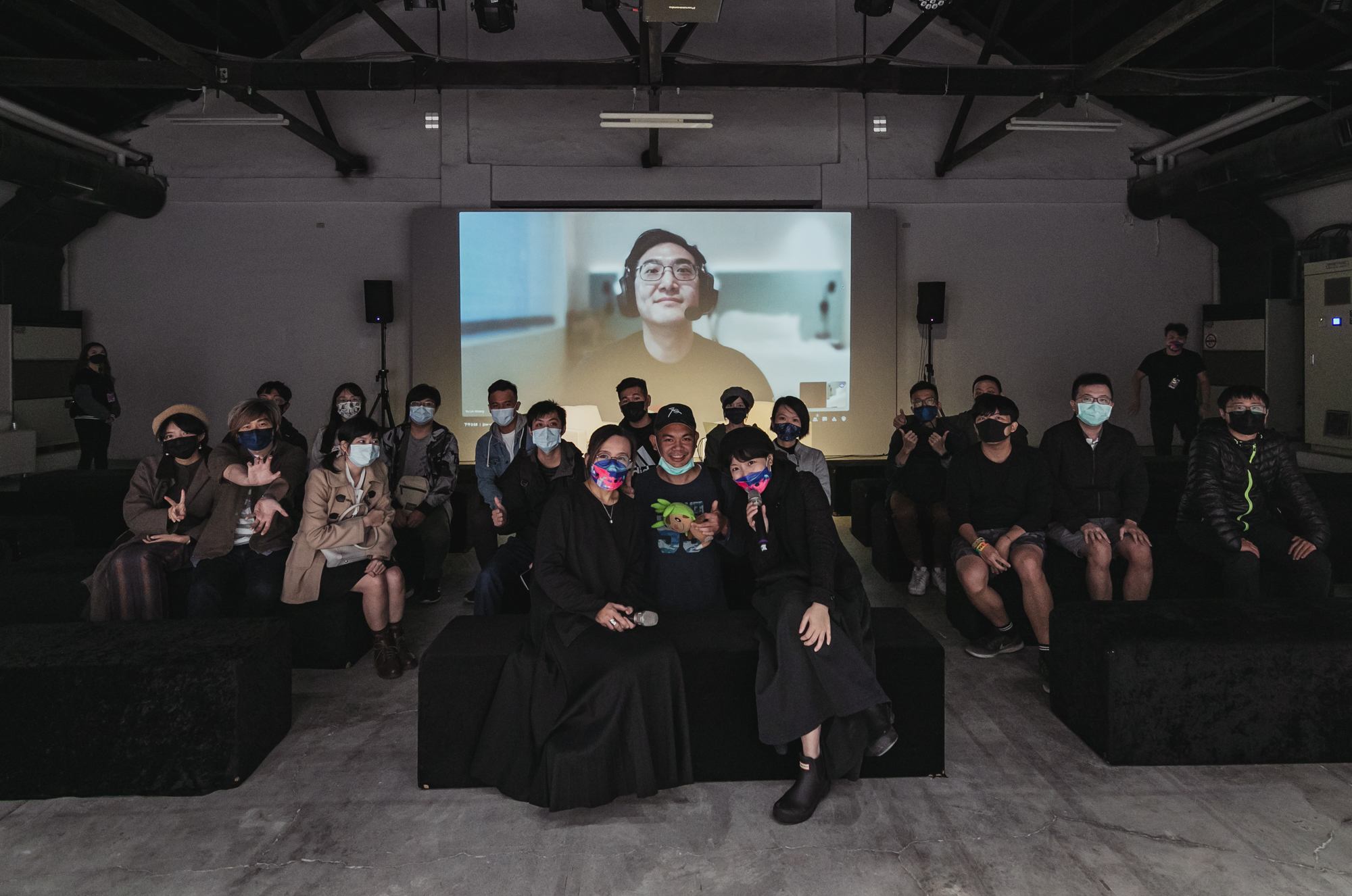


When the video game starts, the consciousness traverses into the virtual world.
Time passes slowly and reality changes without realization.
And the creators of this world - game designers -
takes on the lingering of players as their own responsibility, pondering deeply on the philosophy between aesthetics, mechanism, and text.
With the development of technology and the evolution of society, and through continuous iterations and changes, new worlds have appeared.
We are caught up in how these worlds are made.
What types of designs make people yearn and also fascinated?
Why are we always so thrilled and unable to wait?
—— Area Discourse
Time passes slowly and reality changes without realization.
And the creators of this world - game designers -
takes on the lingering of players as their own responsibility, pondering deeply on the philosophy between aesthetics, mechanism, and text.
With the development of technology and the evolution of society, and through continuous iterations and changes, new worlds have appeared.
We are caught up in how these worlds are made.
What types of designs make people yearn and also fascinated?
Why are we always so thrilled and unable to wait?
—— Area Discourse
GAME ON
At the other end of the passage, there is a doorway where light shines through, becoming a tangent plane of the exhibition space and thoughts. And behind the door is the world inside video games. Pushing open the door in the dark, we are greeted by a bright and white corridor called Loading. The contrast in extreme brightness brings about a perceptual impact of instant pupil contraction. This is used as the opening ceremony of entering into the virtual world.
In this transition corridor, visitors log in to the experience interface created by LINE APP, and create their virtual character, as well as understand the process and mechanism. Turing around and leaving the corridor, visitors enter the Game On main area, which is a video-based virtual-real integration site. In terms of space, various mechanical elements that constitute video games are displayed on the front and rear featured walls, and a large 12 meters squared sky screen is placed on top, symbolizing that this is a virtual world under the monitor screen.
The experience consists of 20 stages, some of which is a four-digit code consisting of ↑↓←→ⒶⒷ that must be entered on the cellphone. With various difficulties, these codes are scattered in the exhibition area. After entering, the content is designed in response to the game mechanism, and visitors can understand the video game itself by actually experiencing it. Some of the stages can be completed independently, while some are multi-player competitions, or need social means in order to reproduce the relationship between players in different types of games. This video game-like structure stacked with mechanisms maximizes the visitors’ right to choose and randomly reestablishes relationships with on-site participants. The exhibition is transformed into an organism, staging a unique journey scene after scene. Many people indulge in the experience and forget about the time, going into a state of total FLOW.





Behind the monitor screen,
is a virtual city-state that is known for its entertainment.
Here is the entrance to escape from reality.
However, as various worlds become more mature and complete,
what was once thought to be a fictional setting actually has precise perceptions and experiences,
and inside, there are real relationships and memories.
We suddenly awake and realize that this entrance is not a door that switches worlds,
but a passage that connects the two ends, which affect each other.
The two ends gradually blur and become inseparable.
—— Ready to Start Discourse
is a virtual city-state that is known for its entertainment.
Here is the entrance to escape from reality.
However, as various worlds become more mature and complete,
what was once thought to be a fictional setting actually has precise perceptions and experiences,
and inside, there are real relationships and memories.
We suddenly awake and realize that this entrance is not a door that switches worlds,
but a passage that connects the two ends, which affect each other.
The two ends gradually blur and become inseparable.
—— Ready to Start Discourse
READY TO START
The video Ready to Start, which is broadcasted on the sky screen every half hour, connects the context of the exhibition and opens up various visual memories of video games. Watching the video by looking upward, along with surround sound, has become a ceremony of perception that is filled with emotion.

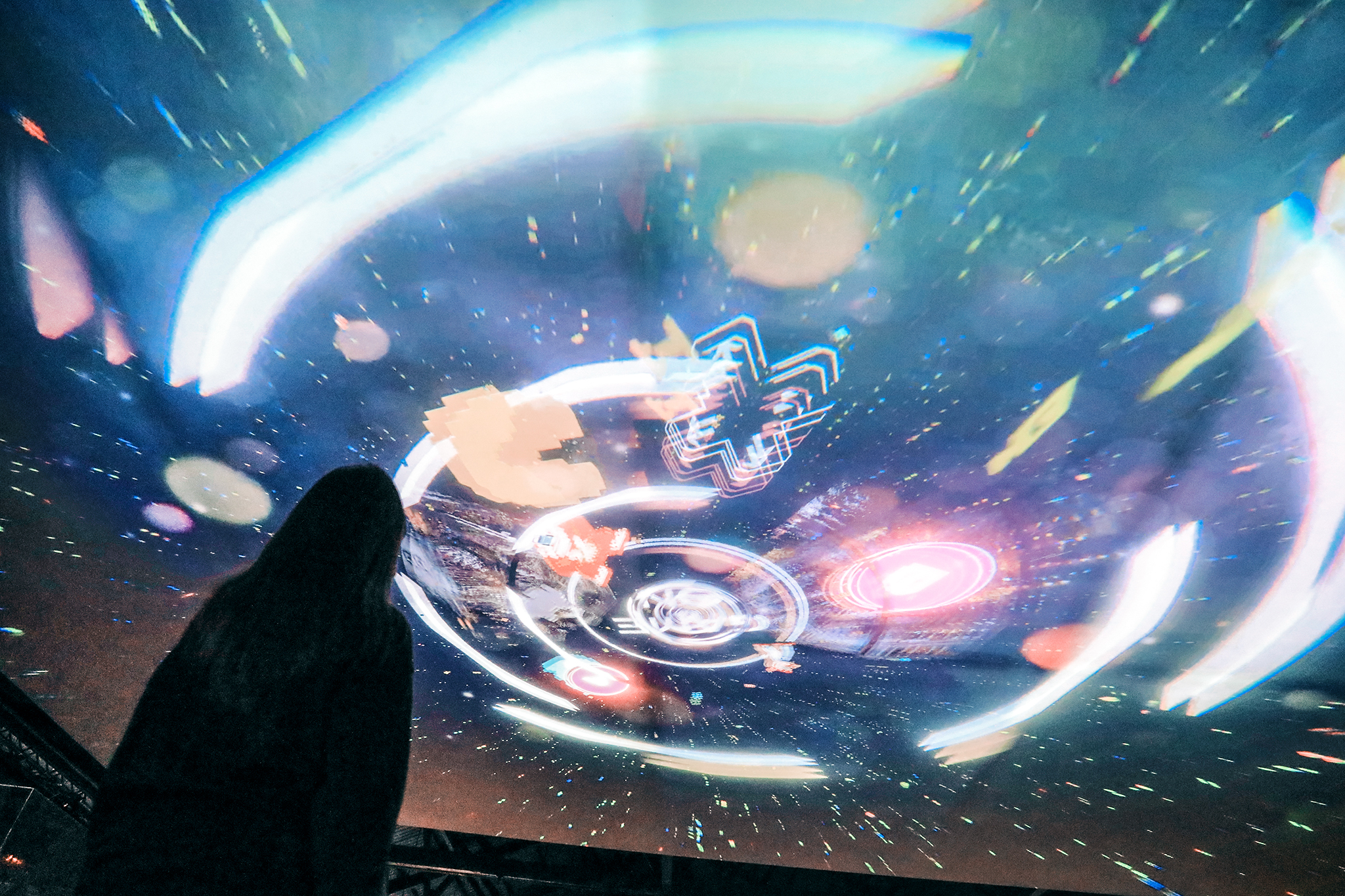
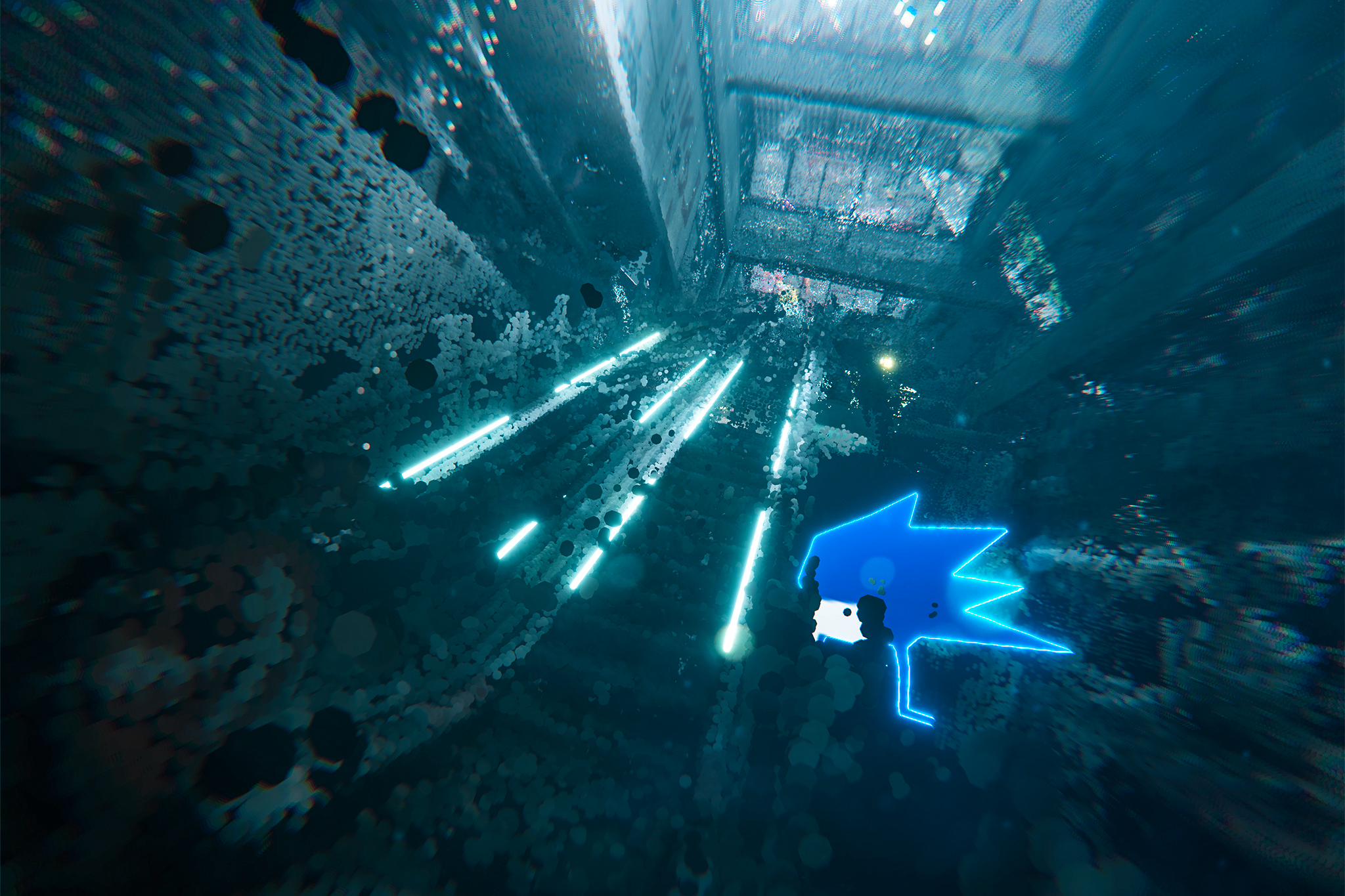



Branch of Exhibition - Yancheng 20 in 1
Different from the main exhibition hall, which progressively leads the visitors to the core of the video game layer by layer, we extended and planned a gamified real-world experience at various scattered locations. Assembling 20 featured locations in Yancheng District, just like an all-in-one video game, each location has become a unique mini-game through the integration of LINE APP. During the process, visitors will explore the details and elegance of this old district, as well as the reconstructed site. What is even more fascinating is the various exchanges between the residents of the area and the players.



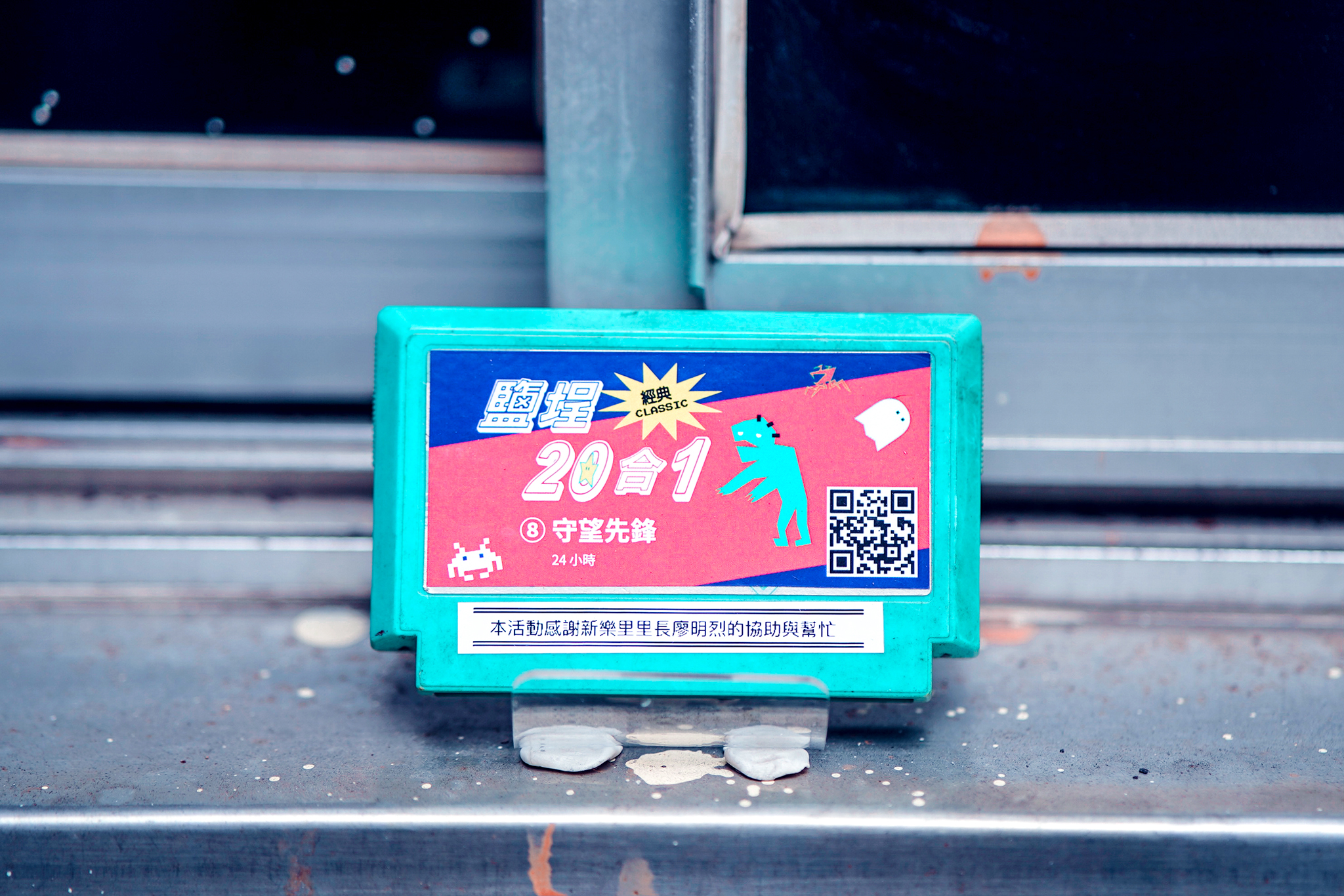



Ⓑeat Ⓑit Ⓑeat
Leo Wang Feat PUZZLEMAN
Using the unique atmosphere of Yancheng First Public Retail Market as the stage, Leo Wang, Golden Melody Award singer, and PUZZLEMAN, the representative of Finger Drumming in Taiwan, worked together to reorganize and restructure classic “video game” theme songs and perform and play with these using game consoles as instruments. Coupled with the introduction of the experimental application of “Co-Presence” in 5G technology, we connected different Kaohsiung scenarios.



2021 DigiWave ︎︎︎︎︎︎︎︎︎︎︎︎︎︎︎︎︎︎︎︎︎︎︎︎ⒷⒶ
2021 DigiWave - ︎︎︎︎︎︎︎︎︎︎︎︎︎︎︎︎︎︎︎︎︎︎︎︎ⒷⒶ
指導單位:高雄市政府、經濟部工業局
主辦單位: 高雄市政府經濟發展局
策展單位:臺灣產學策進會、叁式
協辦單位:叁捌地方生活
指定投影機品牌:Panasonic
參展單位:Team9、智崴資訊、 赤燭遊戲、信仰遊戲、柒伍壹遊戲、SIGONO、 南瓜虛擬科技、 宇峻奧汀、 中華網龍、華泰行、舊遊戲時代、Giloo 紀實影音、BLINKWORKS LTD、啾啾鞋
對談講者:台灣通勤第一品牌、張志祺、GamerBee、施俞如、李勇霆、程思源、陳威帆、林業軒
贊助單位:Giloo 紀實影音、LINE、冠嘉系統科技有限公司、VR 體感劇院、華泰行、舊遊戲時代
品牌統籌:趙逸秋、吳淑靖
專案經理:陳威廷
藝術總監:何庭安
視覺設計:何庭安、顏晧真、江家伶、黃偉哲、李若菩、黃群傑
介面設計:江家伶、何庭安、黃偉哲
技術總監:楊家豪
程式開發設計:蔡佳礽、楊家豪、張存宇
硬體總監:呂承翰
硬體執行:呂承翰、張存宇
沈浸式音響系統設計及執行:鐵吹製作
硬體建置工程:冠嘉系統科技有限公司
空間設計:山陽山陰
展場工務統籌:有用設計
執行企劃:曾煒傑、曹家寧、張存宇、山陽山陰、陳子昀、張楷翊
內容諮詢:Game 話不加醬、陳威帆、張志祺、吳彥鋒
行銷統籌:蔡宜伶、莊虎牙
社群行銷:蔡宜伶、莊虎牙、蘇心怡
公關統籌:紀婉婷、張文殊
展務營運:陳威廷、林家蔚、張楷翊、黃薇如
展務執行:林家蔚、林慧婷、李燕萍、李佳蓉、黃品瑜、謝承芳、汪乃心、陳佳玉、鄭伃涵
展場靜態影像紀錄:李易暹 、顏歸真、曾國書、郭濬緯
展場動態影像紀錄:李金勳、陳弘軒、陳俊甫、高偉鳴
影像剪接:李金勳
特別感謝:陳其邁、廖泰翔、迪拉胖、Ru味春捲、張志祺、詹朴、貝莉莓、鄭宜農、劉真蓉、辜達齊、劉威利、陳韋安、王宏煒、賴柏榕、王瀚宇、湯鈞傑、楊適維、楊曜任、陳廷愷、吳思慧、余欣蓬、陳炯廷、董哲延、語聲者王喬蕎、嚴堯瀚、張家兄弟、張漢杰
顧展人員:黃若嘉 、陳玟寧 、李虹蒲 、戴瑋庭、羅政樺 、陳嘉妤、陳姿妤 、黃宜家、王渝茜、張家禎、蘇子雯、蘇子雯、陳彥宇、李鈺慈、王紫縈、吳沛璇、侯宇哲、郭岱昀、黃鈺雯、洪楦宜、黃琪崴、黃勝崴、紀萱、蕭玉欣、江珮綺、鍾佳穎、王可媗、范原銓、詹貞蘭、蔡品萱、何盈柔、劉千嘉、陳采伶、李燕如、徐如盈、吳文瑄、林意然、賴韻芮、郭晴欣、徐子濯、劉思霈、張芝維、張秀榕、鄭偉婷、張瑜、熊翊廷、呂家宜、鄭美儀、陳涵娟、陳仲孝、王冠詠、高志豪、黃宜家、戴瑋庭、陳嘉妤、陳玟寧、黃若嘉、劉逸涵
Ready to Start
製作人:何庭安
創意總監:曾煒傑
藝術總監:何庭安
技術總監:吳克軍
執行導演:紀昀
動態影像設計:吳克軍、何庭安、顏晧真、黃偉哲
編曲/混音:黃鎮洋
360 攝影:溫崇涵
位元嘻哈 Ⓑeat Ⓑit Ⓑeat
製作人:呂承翰
藝術總監:何庭安
創意總監:曾煒傑
演出藝人:Leo王、PUZZLEMAN
動態影像設計:柚子、顏晧真、李若菩
視覺現場演出:柚子
技術總監:吳思蔚
舞台硬體統籌與執行:鐵吹製作
程式開發設計:吳思蔚、蔡佳礽、楊家豪
硬體總監:呂承翰
系統規劃:呂承翰、張存宇
網路工程:洋洋實業有限公司
鹽埕 20 合 1
策展單位:叁捌地方生活
策展顧問:叁式 Ultra Combos
策展人:邱承漢
初期發想:盧映竹
創意設計:曾國鈞
企劃執行:蘇眉桂
程式開發設計:陳廷愷、蔡佳礽、楊家豪
店家洽談:曾國鈞、蘇眉桂、羅文昕
NPC協力:林杰慷
特別感謝擔任NPC的鹽埕鄉親們與店家:
鹽埕第一公有市場所有攤商與店家、Booking、廢墟 bar、高鈺鈕釦、泰昌西服、金樹帽蓆行、三山國王廟、老耄、超級鳥百貨、沙多宮、信東食品行、 佬掉牙、正麗髮型、空腹虫大酒家、銀座聚場、新樂里廖明烈里長
特別感謝提供玩家回血回魂的補給站店家:
阿貴虱目魚店、姊妹老五冷飲早餐店、山壹旗魚食製所、小堤咖啡
港園牛肉麵、崛江麵、阿英排骨飯、永和小籠包、香茗茶行
李家圓仔冰、阿男燒烤、大胖豬油拌麵、酒場清志郎
喵姨蛋餅、50年杏仁茶、高雄婆婆冰、阿綿手工麻糬
老屁股音樂屋、純愛氷菓室 PUPPY LOVE、牛津啤酒屋

